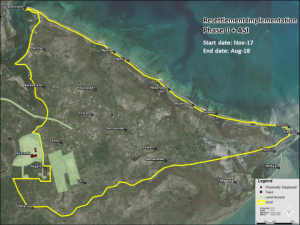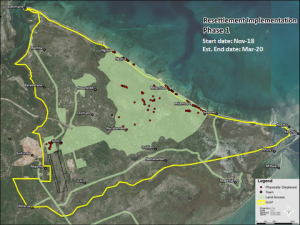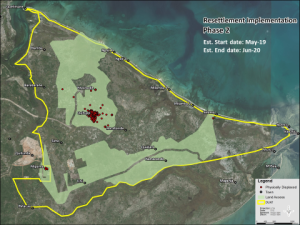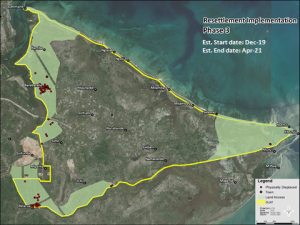Resettlement plan
Our resettlement plan aims to restore or improve the livelihoods of any physically and economically displaced person related to the project on the Afungi Peninsula.
The resettlement plan complies with Mozambican legislation and follows the International Finance Corporation (IFC) Performance Standard 5. This standard is widely recognized as the international best practice benchmark for private sector projects involving land acquisition and resettlement. The plan was duly approved by the Mozambican Government on November 8, 2016.
The plan addresses (i) the physical displacement of the Quitupo community and families and (ii) the economic displacement of families who lose the use of cultivated land, fallow land, forests, or other land assets. Furthermore, it also considers the economic displacement of intertidal collectors and fishermen affected by the construction and operation of nearshore and offshore infrastructure.
Feedback from stakeholder engagement and grievance mechanism
Resettlement planning included extensive consultations with all key stakeholders. We held more than 800 formal meetings, with the active participation of members of the communities of Senga, Maganja, Quitupo, Mondlane and Palma-Sede, as well as representatives of district and provincial governments, civil society, and the media.
Additionally, we have established and implemented a community grievance and grievance mechanism to receive, assess and promptly respond to concerns raised, thereby ensuring effective resolution of issues.
Implementation phases
The resettlement plan consists of three main implementation phases. However, essential initial activities were also carried out to safeguard the land intended for the construction of the town of Quitunda (the new village) and other initial works, known as Afungi Site Improvement (ASI).
The table summarizes the number of families physically and economically displaced on land during Phase 0 – VR based on 2013-15 baseline data. The Gardens and Domestic Assets agreements include physically and economically displaced families.
Displaced households by phase
| Phase | Estimated No. of Physically Displaced Households | Estimated Period for Physical Relocation | Estimated No. of Gardens and Asset Agreements* |
|---|---|---|---|
| Phase 0 + ASI | 9 | 2nd quarter, 2019 | 345 |
| Phase 1 | 163 | 2nd and 3rd quarters, 2019 | 1084 |
| Phase 2 | 306 | 2nd and 3rd quarters, 2020 | 520 |
| Phase 3 | 79 | 4th quarter, 2020 | 341 |
| Total | 557 | 2290 |
Note:
Data current for April 2018. Estimates subject to change as census and asset inventories are updated.
*The estimated number of agreements is not the same as the number of affected families, as some families sign multiple agreements depending on the location of their assets.
Implementation phase and timeline
Here, we show the geographical extent of each resettlement implementation phase and its timeline.




Resettlement downloads
More about the resettlement plan
Resettlement plans and programs
Quitunda Village
The new community constructed for households affected by physical displacement.
Livelihood restoration
The new community constructed for households affected by physical displacement.
Vulnerable people’s programme
Assistance to households considered more vulnerable during the resettlement process.